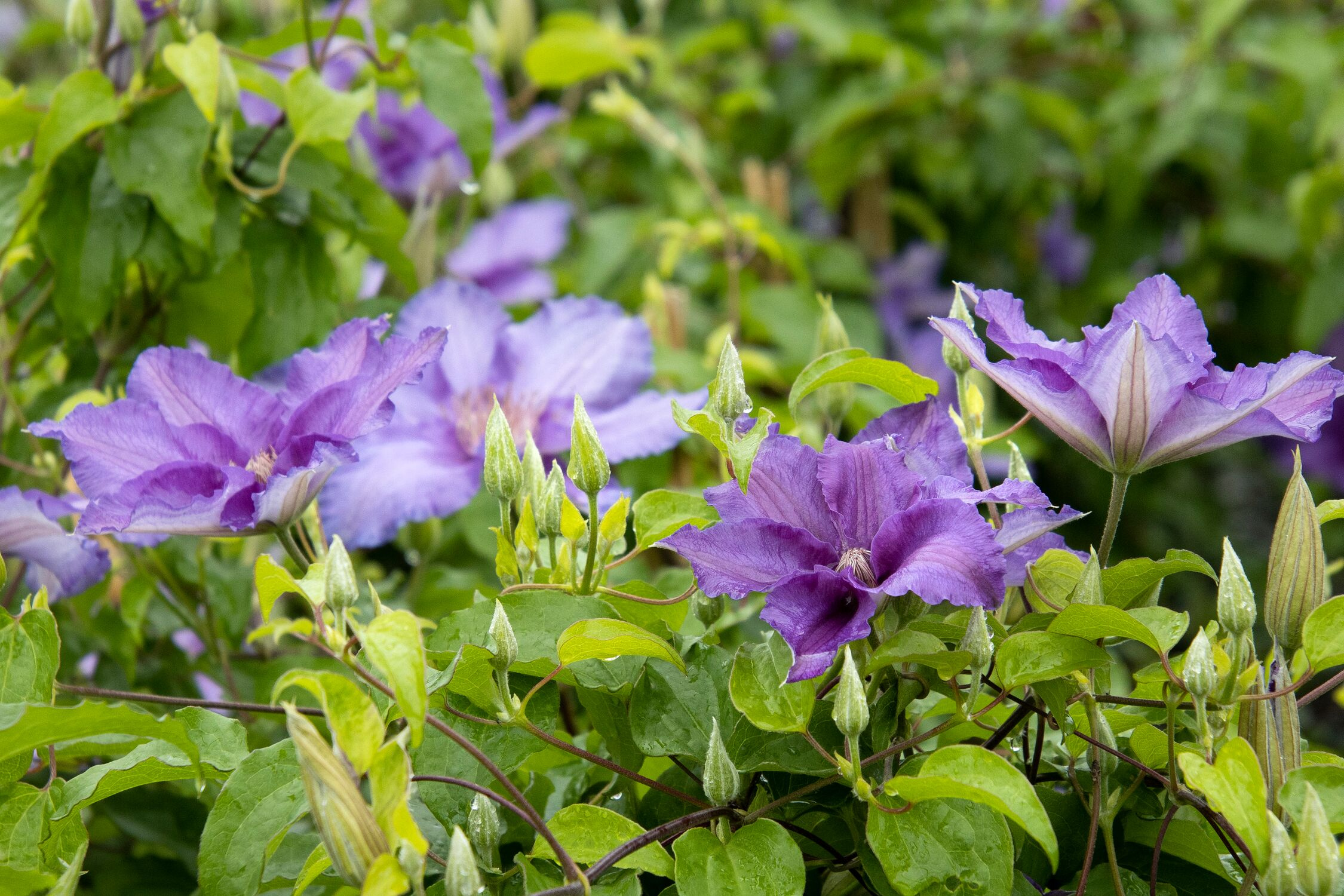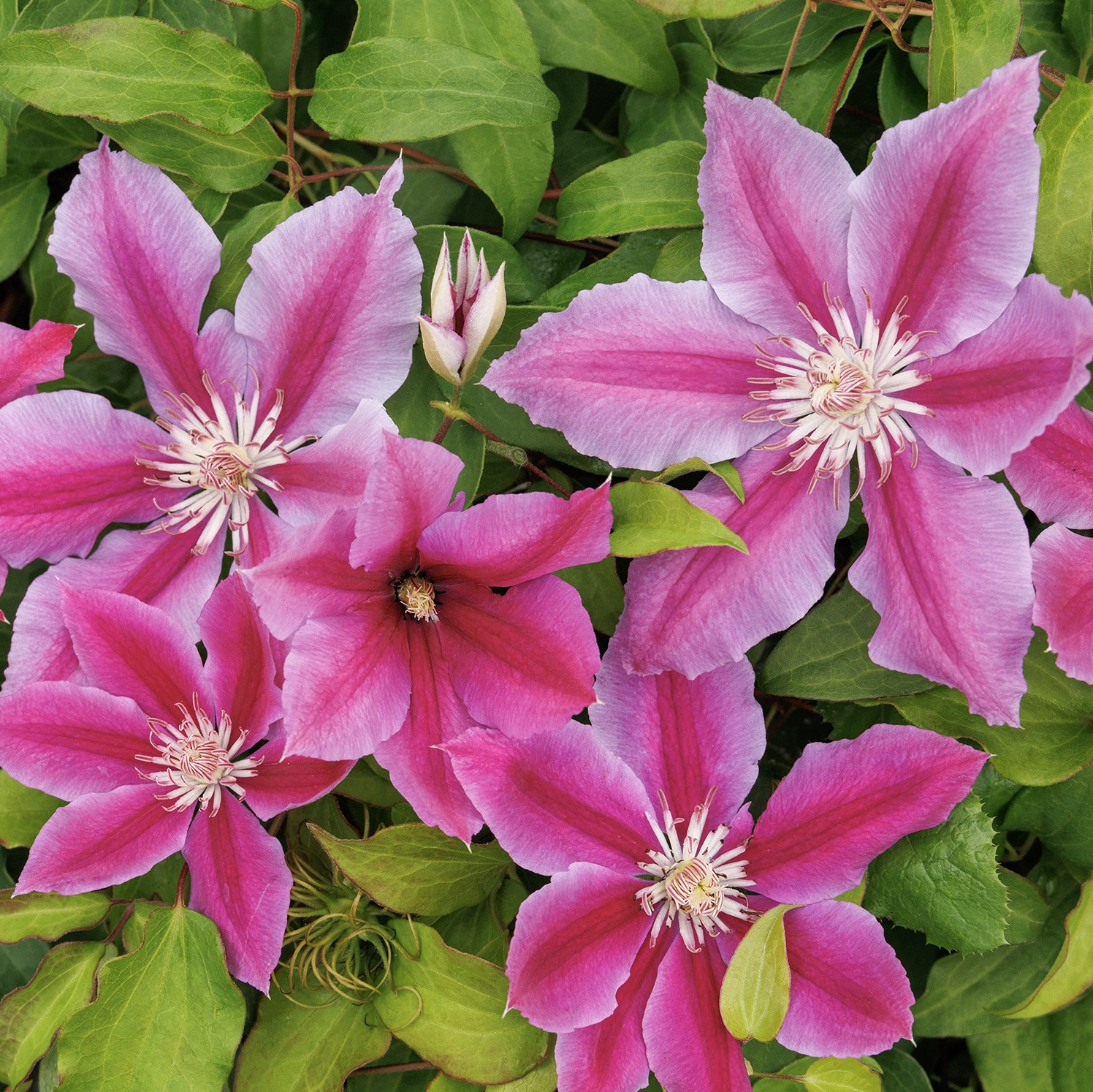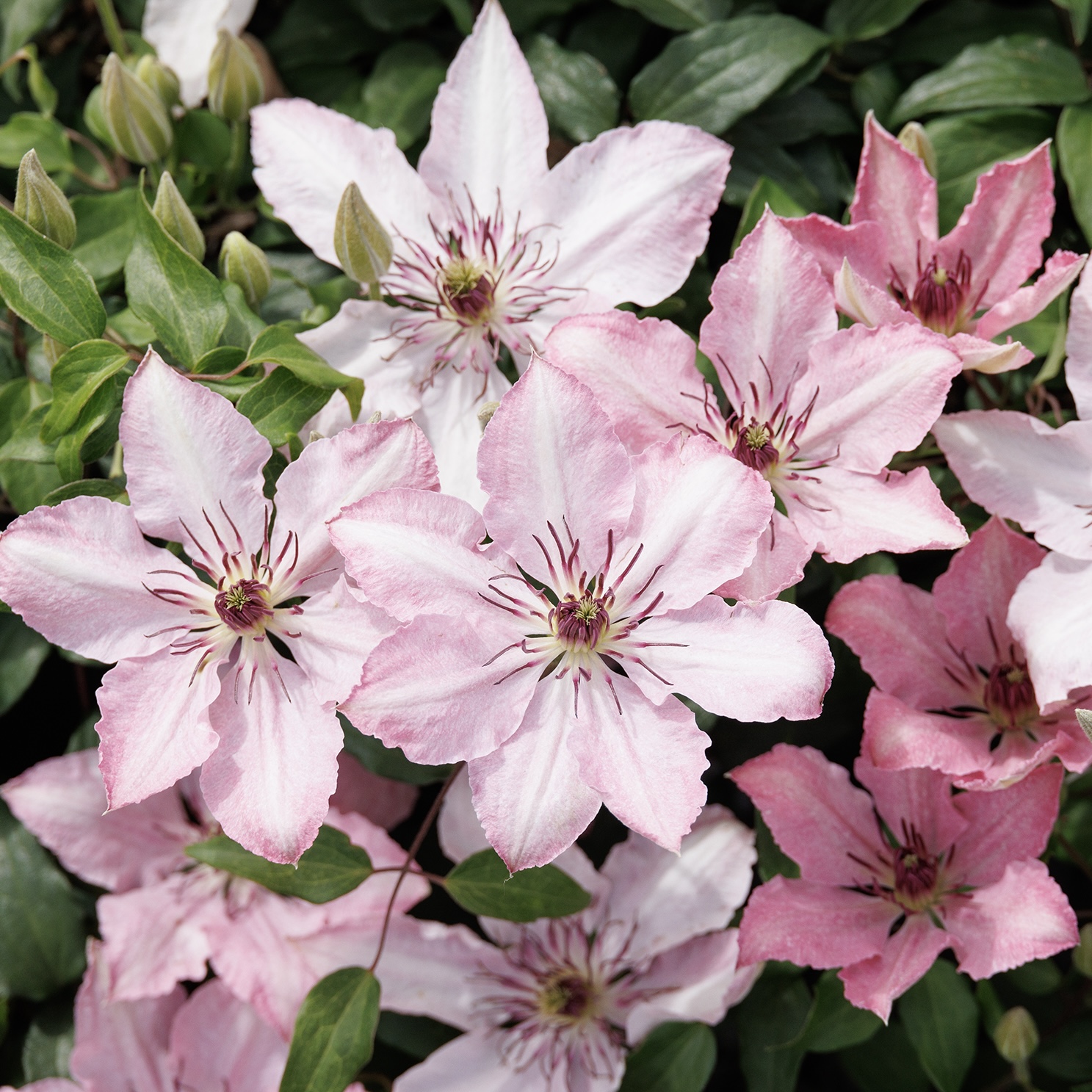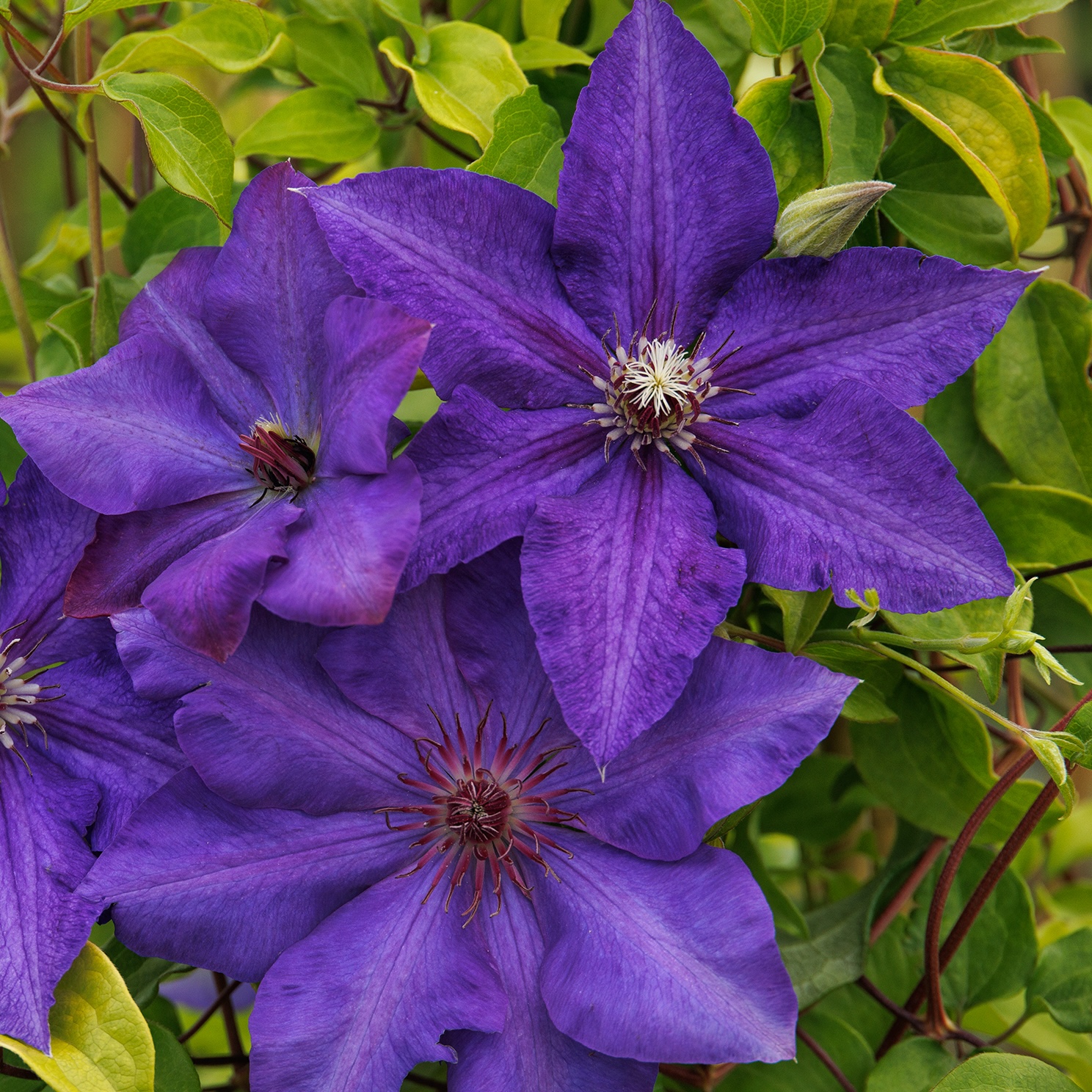Have you ever dreamed of transforming your garden into a display of colorful, climbing flowers? Look no further than the clematis! Known as the "queen of climbers," this carefree perennial vine is a showstopper that will take your outdoor space to new heights.
With its graceful, vining stems and star-like flowers, clematis is a must-have for any garden enthusiast. Clematis flowers come in various colors, including white, pink, red, and different shades of blue and purple. These blossoms gracefully climb trellises and intertwine with other plants, adding a burst of summer color to your garden. Whether you're a seasoned green thumb or a novice, clematis is surprisingly easy to grow once you know the basics.
In this care guide, we'll unravel the secrets to successfully growing and nurturing these flowers, so you can enjoy their beauty in your own outdoor oasis.
Clematis Care: At a Glance
Here's a quick overview of the essential aspects of clematis care:
- Plant in a sunny spot with well-draining soil rich in organic matter
- Provide a sturdy support structure for climbing
- Keep roots cool with mulch or shade from nearby plants
- Water deeply and regularly, especially during the first growing season
- Prune according to your clematis' group (1, 2, or 3)
- Monitor for common issues like clematis wilt and powdery mildew
- Address pest problems promptly with appropriate treatments
- Avoid transplanting unless absolutely necessary
Types of Clematis
Clematis varieties are divided into three distinct groups based on their growing season and other characteristics. Understanding these groups is crucial for knowing when your clematis vine will bloom and the appropriate time for pruning:
- Group 1 (spring bloomers): This group includes early flowering types like C. alpina and C. macropetala, which showcase single or double flowers, and some C. montana with large saucer-shaped blooms. These clematis bloom on old wood and require no pruning.
- Group 2 (repeat bloomers): These clematis flower early to mid-summer and may have a second flush in mid to late summer. They feature single or double saucer-shaped flowers. Blooming occurs first on old wood and then on new growth. Prune only as needed to shape and remove weak growth, typically in late winter to early spring.
- Group 3 (summer or fall bloomers): The later flowering clematis belongs to this group, boasting large saucer-shaped flowers in summer and early autumn. This group also includes small flowering clematis with various flower shapes such as saucer, star-shaped, bell, open bell, tulip, and tubular. These clematis bloom on new growth and can be hard pruned back to 12 inches in late winter or early spring.
When selecting clematis for your garden, consider choosing varieties from different groups to create a beautiful display of blooms throughout the season. Keep in mind that each group has specific pruning requirements, so it's essential to space clematis from different groups to avoid intertwining vines unless you live in an area where clematis die back to the ground and require hard pruning.
Monrovia's Clematis Collection
Monrovia offers a wide selection of clematis varieties. Here are some of the exceptional clematis plants grown by Monrovia:
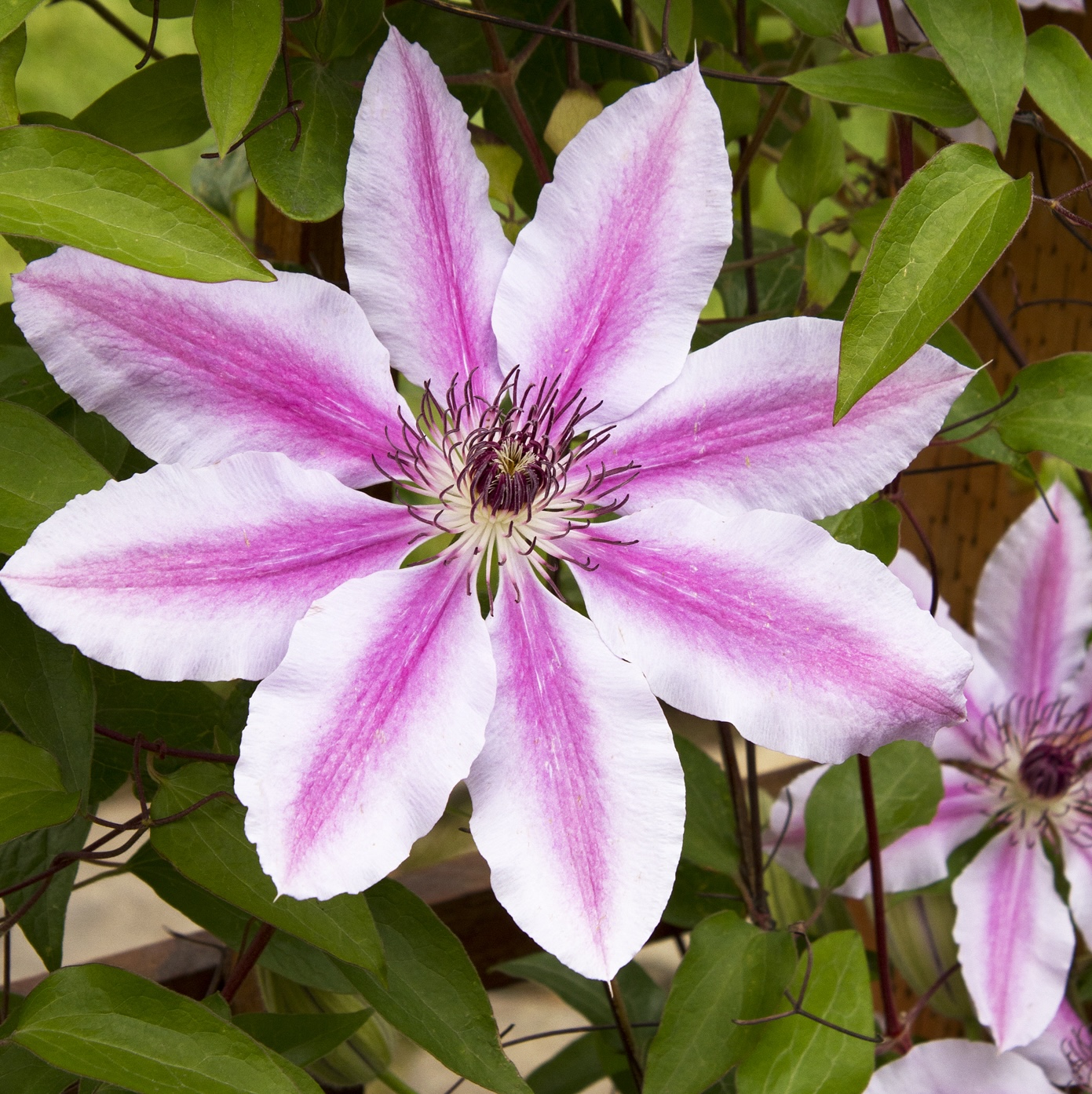
Nelly Moser Clematis: A woody flowering vine with large, showy pink blooms featuring dark pink ribbons on each petal. Blooms in late spring to summer and quickly climbs 15 ft. tall with support. Deciduous and thrives in partial sun.
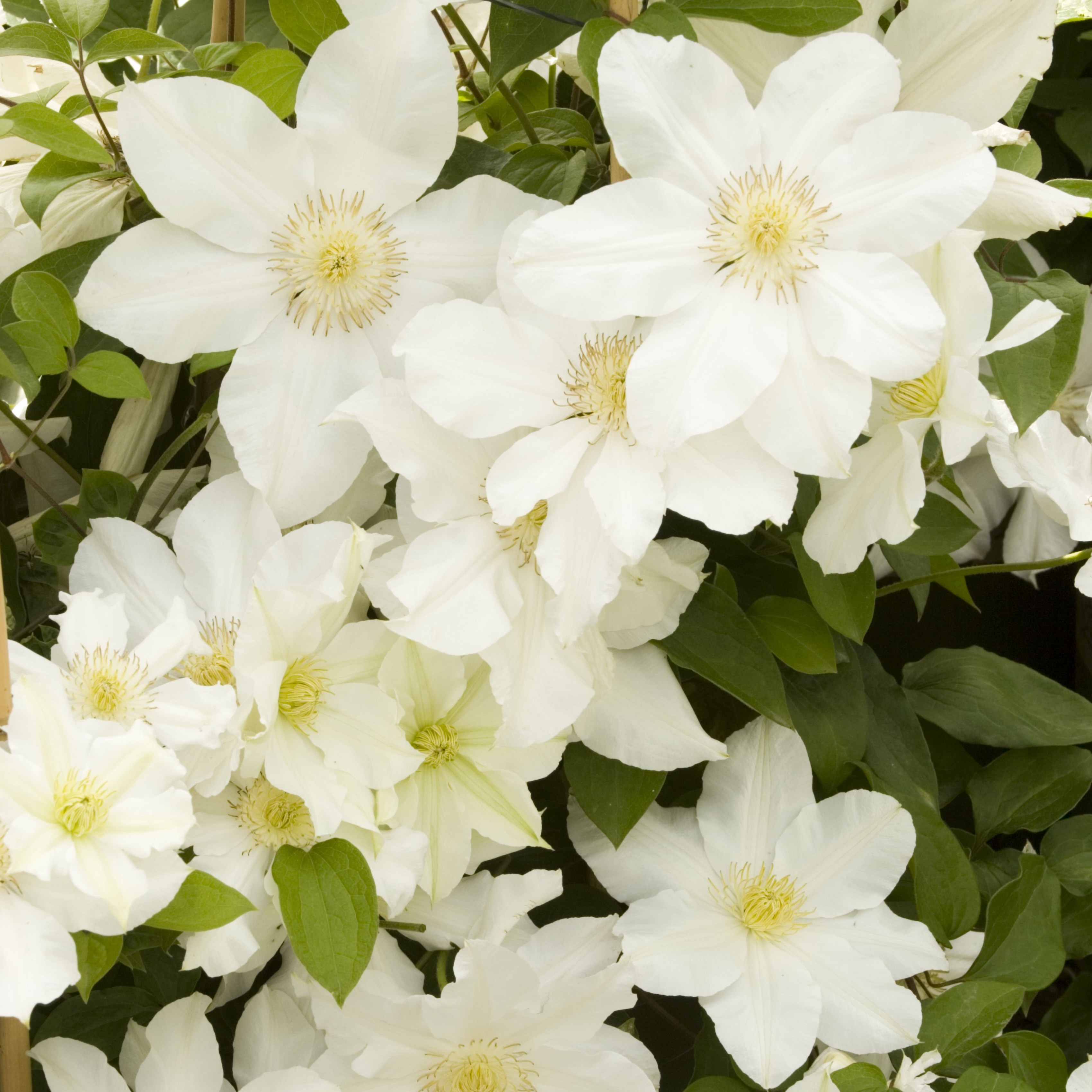
Toki Clematis: Large white flowers with delicate yellow stamens, among the earliest clematis to bloom. Well-suited to small spaces and containers. Deciduous and prefers full sun. Blooms in late spring and again in late summer, reaching 4 to 9 ft. tall with support.
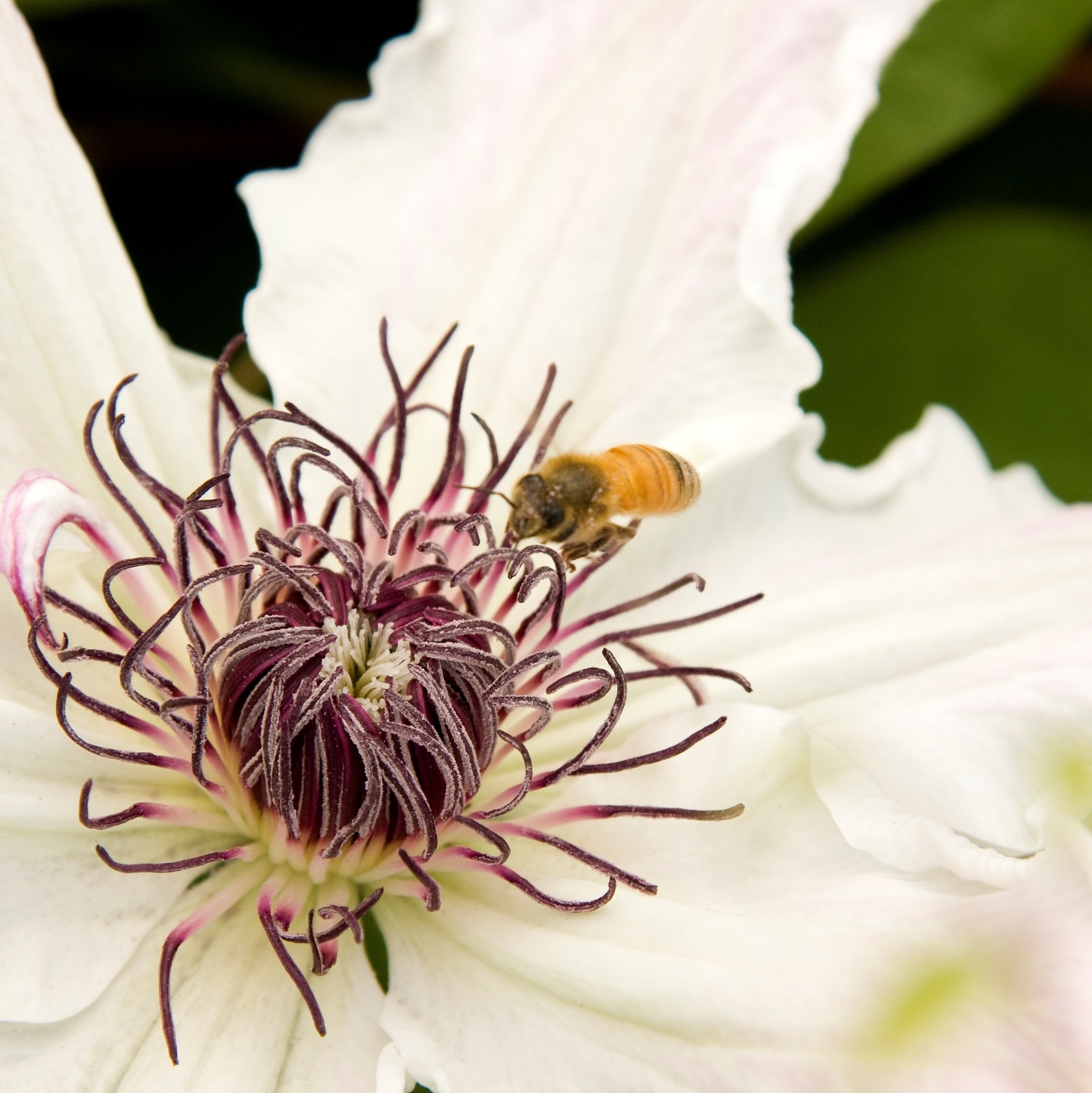
Vancouver™ Fragrant Star Clematis: Pure white, star-shaped blossoms with a pleasing light vanilla scent and striking deep red stamens. Ideal for containers or climbing fences and walls. Deciduous and thrives in full to partial sun. Blooms in late spring and again in early fall, reaching 6 to 8 ft. tall with support.
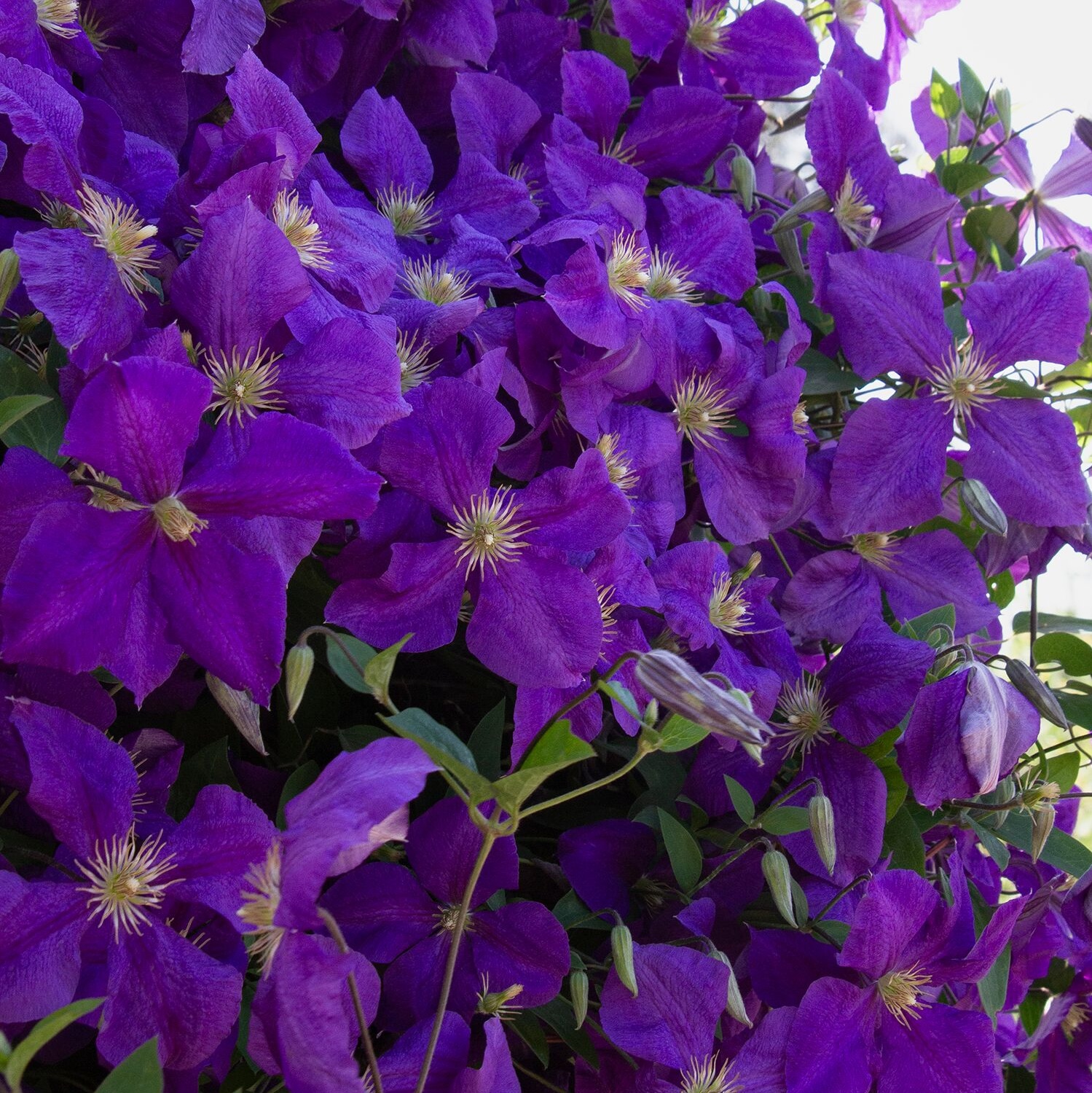
Jackman Superba Clematis: The most popular of the clematis vines, showcasing showy, deep purple flowers throughout most of the summer. An excellent choice for adding vertical interest to the landscape on fences, trellises, or along rock walls. Deciduous and thrives in full to partial sun. Fast-growing stems reach 10 to 12 ft. tall with support.
For guidance, click here to learn how to choose the best clematis for a long season of blooms.
Choosing the Perfect Spot and Planting Your Clematis
When it comes to giving your clematis the best possible start, selecting the ideal location and planting it with care are key. While some cultivars like 'Nelly Moser' can tolerate partial shade, most clematis varieties flourish in spots that receive at least six hours of sunlight daily. But that's not all—these beauties also crave well-draining soil that's been generously enriched with organic matter.
Here are a few tips to ensure your clematis thrives:
- Choose a location with plenty of space for your vine to stretch out and grow.
- Provide a sturdy trellis or support structure for your clematis to climb and showcase its stunning blooms.
- If your soil is acidic, treat it occasionally with limestone or a sprinkle of wood ash to create the slightly alkaline to neutral pH that clematis prefers.
When you've found the perfect spot, it's time to plant! Ideally, you'll want to do this in early spring or fall. Follow these step-by-step instructions for planting your clematis:
- Prepare the soil by loosening it and mixing in compost, granular organic fertilizer, or well-rotted manure to provide your clematis with a nutrient-rich home.
- Dig a hole that's twice the size of the clematis' root ball.
- Gently remove the clematis from its pot and place it in the hole.
- Position the plant so the first set of true leaves is just below the soil surface. This planting depth is slightly deeper than it was growing in the pot, but it will encourage strong root growth.
- Backfill the hole with the native soil, gently pressing it around the plant to remove any air pockets.
Caring for Your Clematis: Watering, Sunlight, and More
By choosing a Monrovia clematis, you're already off to a fantastic start, and with the proper care techniques, you'll find that maintaining your clematis is a breeze.
First and foremost, remember the golden rule of clematis care: "Head in the sun, feet in the shade." Clematis loves to bask in the sunlight, but its roots prefer a cooler, shadier environment. To achieve this, simply lay stones around the base of the plant or add annuals or perennials to provide shade and keep the soil cool. Mulching around the roots will also help conserve moisture and regulate soil temperature.
When it comes to watering, clematis has deep roots, so it's essential to water slowly and thoroughly if rainfall is scarce. Aim to water weekly during the first growing season to help your clematis establish a strong root system. Trust me, if you can nurture your clematis through its first year, it will reward you with vigorous growth and stunning blooms for years to come.
Another crucial aspect of clematis care is pruning. Understanding the pruning groups is vital for maintaining a healthy, flourishing vine:
- Group 1 clematis blooms on old wood and requires minimal pruning.
- Group 2 and Group 3 clematis bloom on new wood and benefit from more extensive pruning.
Lastly, while it's possible to transplant clematis, choosing your planting location wisely from the start is best. Clematis prefers to stay put once it's established, so only transplant if absolutely necessary and do so with great care.
With these tips in mind, you're well on your way to enjoying the beauty of clematis in your garden. Give your plant the care it deserves, and it will undoubtedly become a showstopping addition to your outdoor space.
Common Clematis Concerns: What to Watch For
While clematis is generally a low-maintenance plant, there are a few issues that you should keep an eye out for to ensure your vine stays healthy and beautiful. The most devastating problem is a fungal stem rot and leaf spot called clematis wilt, caused by the fungi Phoma clematidina and Ascochyta clematidina. If you notice your clematis suddenly collapsing and turning black, don't panic! Simply:
- Cut off and destroy all affected parts
- Rake up and dispose of fallen foliage
- If your clematis was planted with two buds below ground, it should regrow from the base next year
Powdery mildew can also affect clematis, especially in areas with poor air circulation. To prevent this, plant your clematis where there's good airflow and remove any leaves showing signs of white, powdery fungal growth. Avoid getting the foliage wet when watering, and clean up fallen leaves at the end of the season.
Pests like aphids, mites, slugs, rabbits, and mice may occasionally cause issues, but these can typically be managed with insecticidal soaps, baits, or other targeted treatments. Don't let these potential problems deter you—with a little TLC, your clematis will be the star of your garden in no time!
Commonly Asked Questions About Clematis
What are the basic requirements for growing healthy clematis?
Clematis prefers well-draining soil, at least six hours of sun daily, cool roots, and a climbing support structure. Water deeply when the top inch of soil is dry.
How do I choose the right clematis for my garden?
When selecting a clematis variety to complement your landscape, consider mature size, flowering time, pruning needs, and garden conditions.
What common problems may affect clematis, and how can I prevent them?
Clematis can be prone to fungal diseases and pests. Ensure proper air circulation, avoid overwatering, maintain garden hygiene, and address concerns promptly.
Get More Plant Care Tips and Guides
- Sign up for the Grow Beautifully Newsletter. You'll get gardening tips, design ideas, free digital guides, and live webinar invites. Plus, new, exclusive plant information is delivered straight to your inbox twice a month.
- Shop all Clematis varieties
- How to Choose the Best Clematis for a Long Season of Blooms
- Our Top 10 Gardening Tips
- Guide to Pruning Flowering Shrubs
- Find the Best Plants for Your Garden
- Inspiring Garden Ideas
- Check out the "Garden Tips" section of the blog. Here, you can find care guides and garden tips on various plants.




